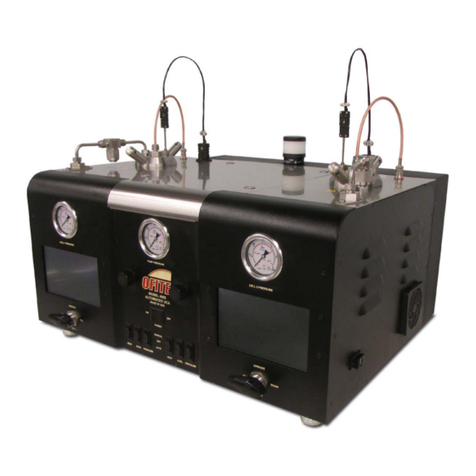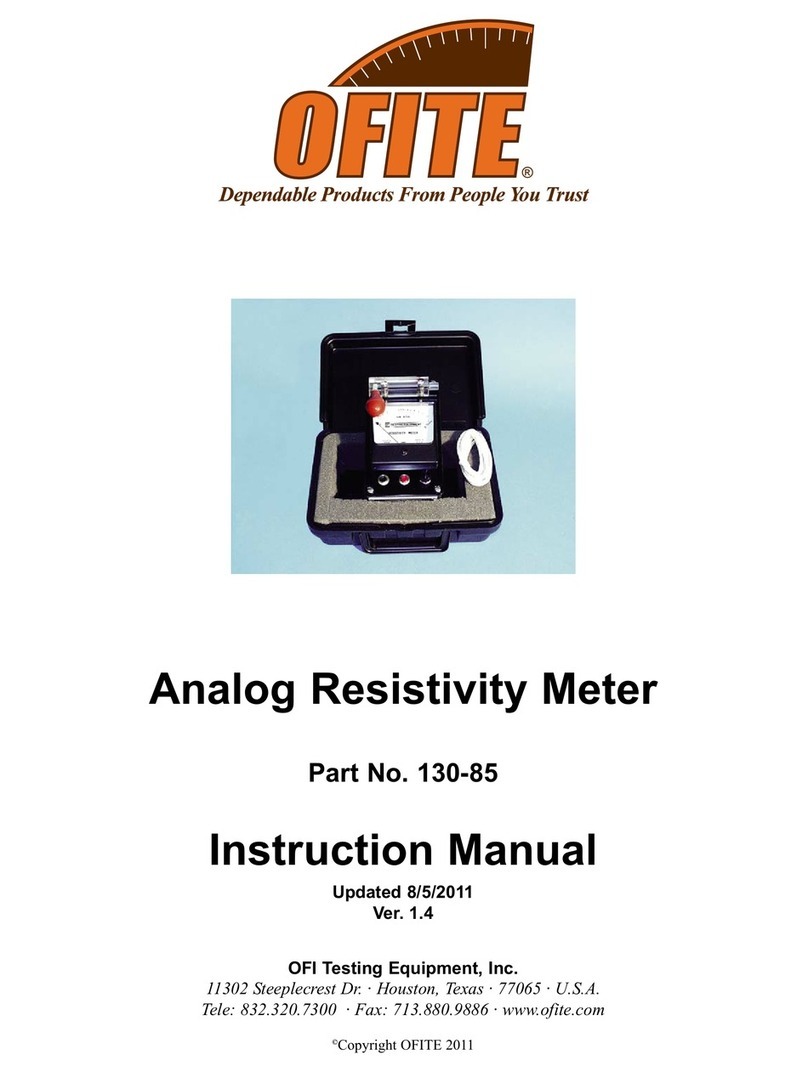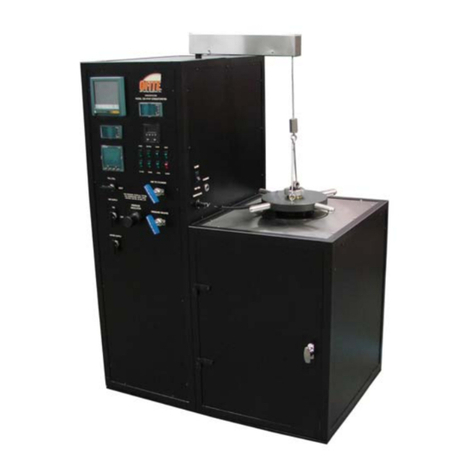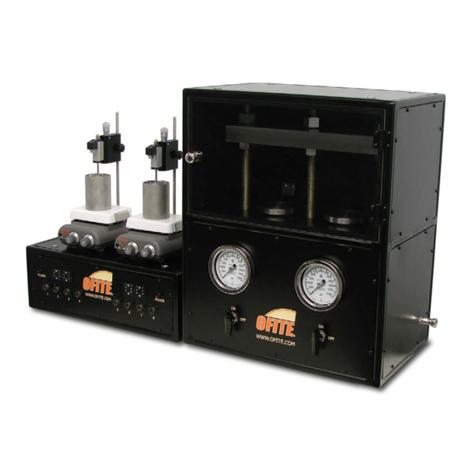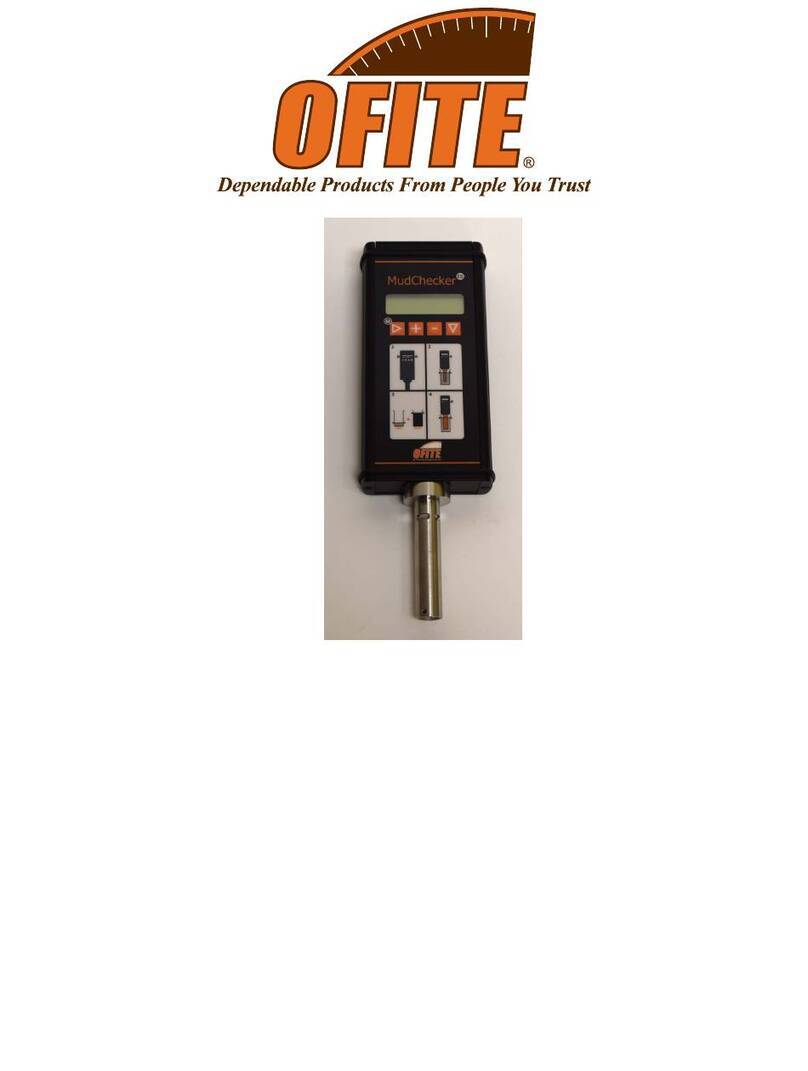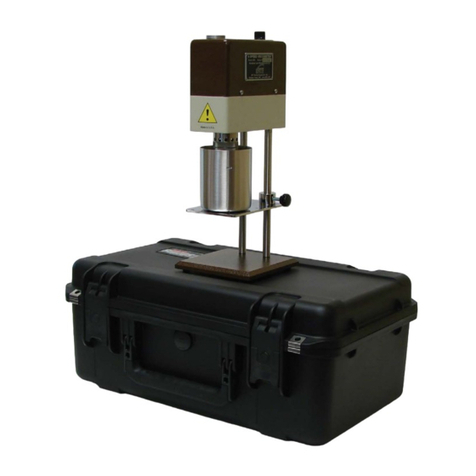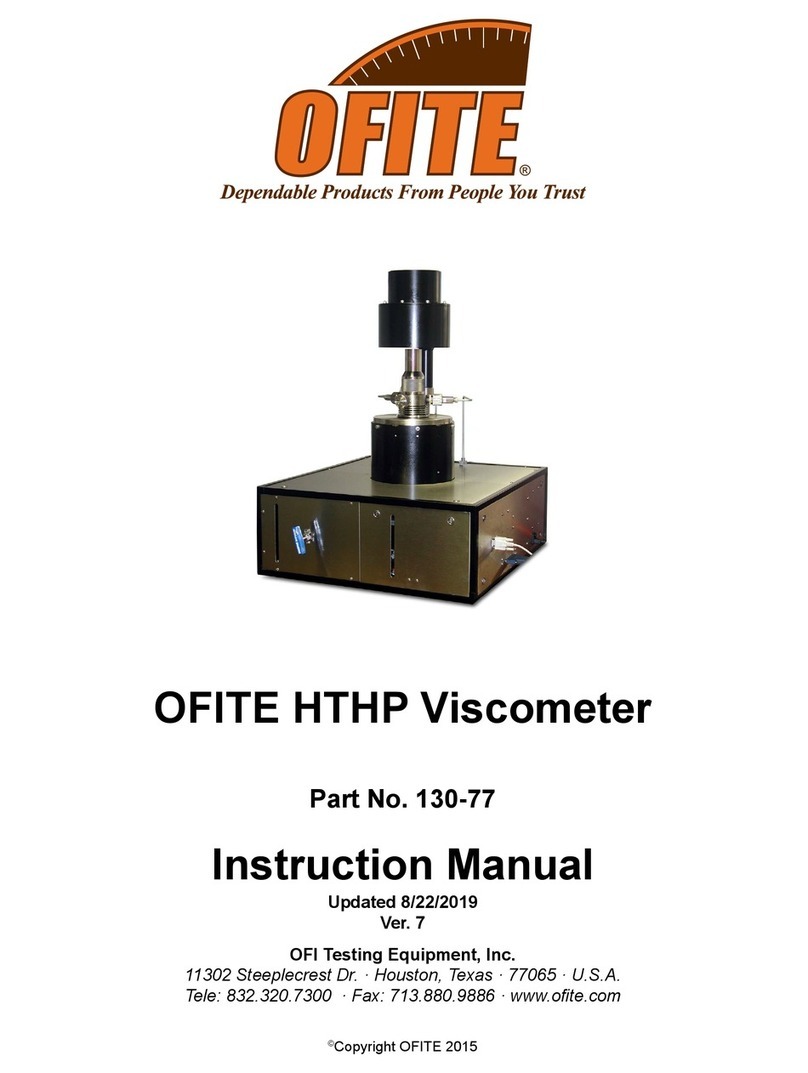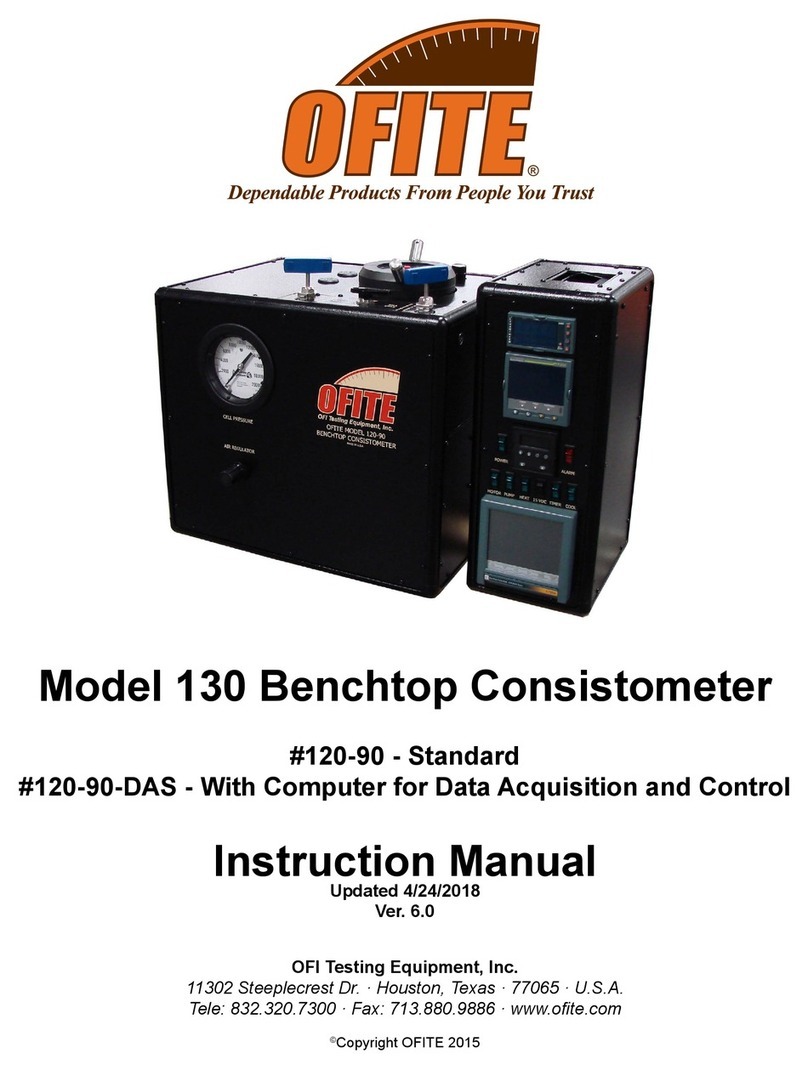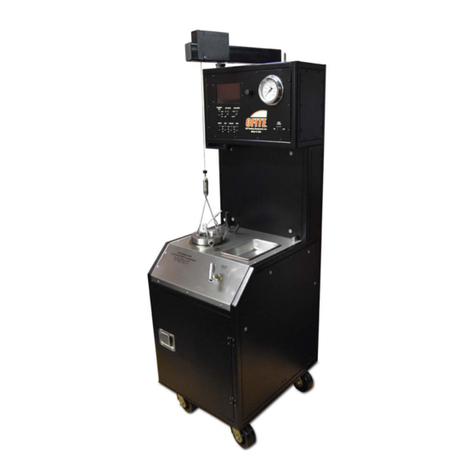
OFITE, 11302 Steeplecrest Dr., Houston, TX 77065 USA / Tel: 832-320-7300 / Fax: 713-880-9886 / www.ote.com 8
Creating a
Calibration
Curve
The volume of a calcimeter reaction cell determines the relationship between
the pressure increase and the amount of CO2released. This relationship
is constant for a given reaction cell. The calibration curve and calculated
calibration factor are used to convert the amount of pressure released
into a percentage of calcium carbonate. All points on the calibration curve
represent 100% CaCO3(for that sample weight). Any number of samples can
be used to construct the calibration curve. The following are recommended
for accuracy.
1. Prepare ve sets of duplicate specimens with the following masses of
CaCO3:
0.2 ± 0.01 g
0.4 ± 0.01 g
0.6 ± 0.01 g
0.8 ± 0.01 g
1.0 ± 0.01 g
2. Load a calibration sample.
Perform the procedure outlined in the “Test Procedure”, step 3.
3. Tip the cell and allow acid to run out of the cup onto the sample. Swirl the
cell gently and continuously until a constant pressure is obtained. This
will take at least 10 minutes. Keep the reactants in the lower part of the
cell to avoid getting acid into the pressure gauge or pressure transducer.
As soon as the reaction has started, observe the rapidly rising pressure.
Record the peak pressure to the nearest 0.1 PSI (0.5 kPa) as the CaCO3
pressure for the sample weight used.
If a mechanical shaker is available, it may be used to agitate the cell
rather than swirling the reactants. Agitate the sample for 10 minutes.
4. Repeat steps 2 and 3 for each of the remaining samples you prepared in
step 1.
5. For each sample create a plot on linear graph paper. On the x-axis plot
grams of CaCO3 and on the y-axis plot the nal pressure in PSI. Draw
a straight line through the average of the points. The graph on page 9
shows a sample calibration curve.
6. Because the relationship between pressure and sample size is linear, you
may assume the curve to be a straight line with a constant slope. As the
graph on page 9 illustrates, the slope of the curve is 2 PSI / .1 g CaCO3,
or 20 PSI / 1.0 g CaCO3, resulting in a slope of 20. Therefore, the
calibration factor is .05 × 100 = 5. This number is the slope or average
slope for the equipment. It is a function of the volume of the reaction cell.













